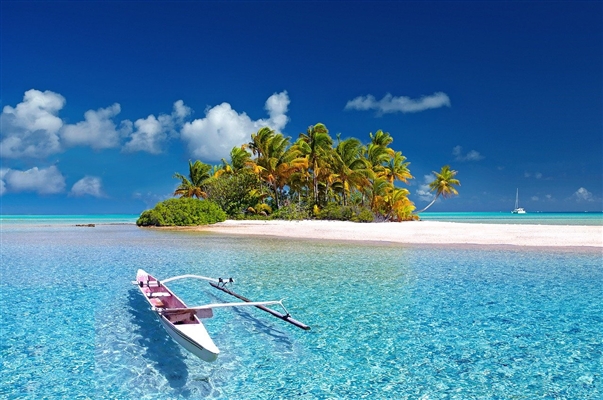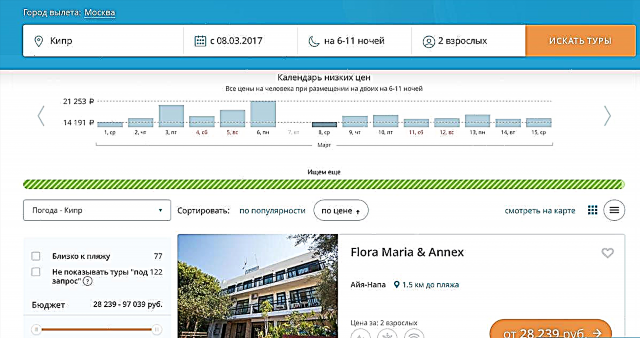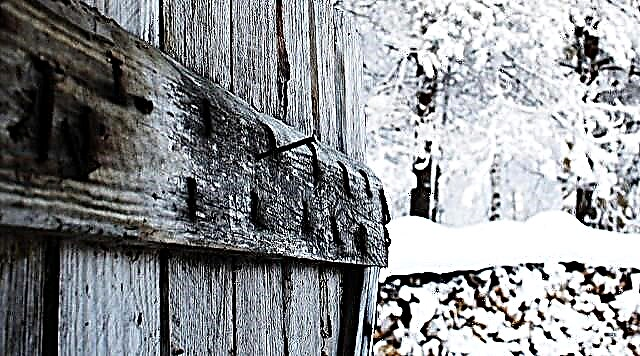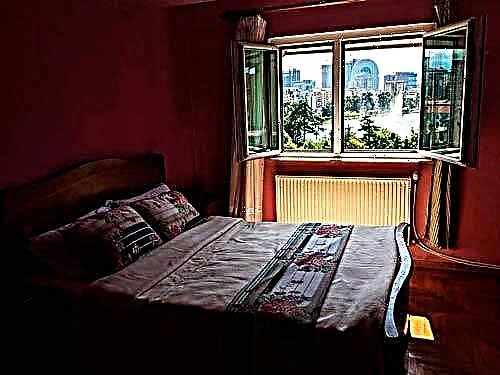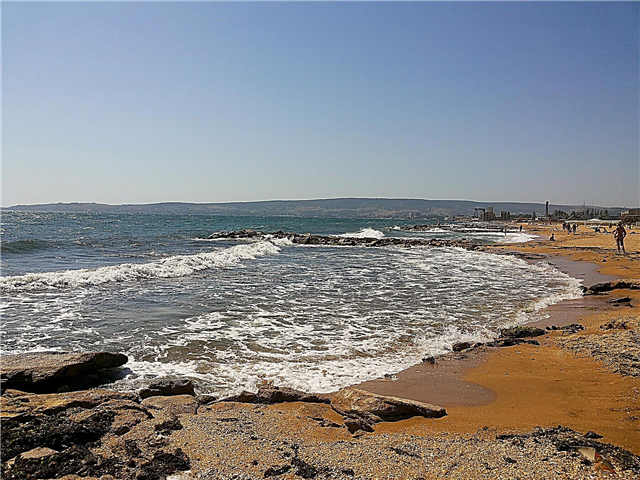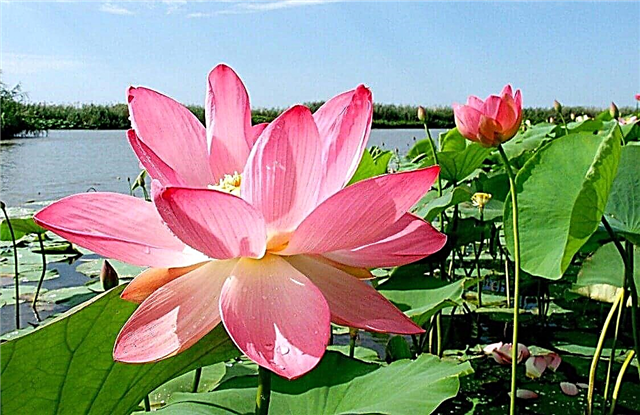The Astrakhan Region is an old Russian region with a centuries-old fascinating history and rich cultural heritage. On its territory there are many educational routes that introduce you to the landmarks of the region. Among them - the majestic Astrakhan Kremlin, the monument "Selitrennoe settlement" and the city-museum Saray-Batu.
The region is famous for its natural resources - the famous lotus valley, the Astrakhan reserve with unique flora and fauna, the Baskunchak salt lake. One of the leading tourist destinations in the region is fishing and hunting, a traditional brand of the region. It is also difficult to imagine the Astrakhan region without juicy and sweet watermelons. Lovers of this berry should visit the Russian Watermelon Museum.
The most interesting and beautiful places in the region
List, photos with names and descriptions of attractions worth visiting!
Astrakhan Kremlin
One of the main architectural monuments of Astrakhan is located on the island, washed by the Volga, several of its branches and channels. The first wooden building of the Kremlin was erected in 1558. The construction of stone walls and towers began in 1580 and lasted 40 years. The material was the remains of bricks from the former capital of the Golden Horde. In order to protect against raids, the walls of the defensive fortress were dotted with numerous cannon loopholes. During its existence, the Kremlin has been rebuilt several times and has not survived in its original form. In the museum on its territory there are exhibitions dedicated to military topics and the history of Ancient Russia.

Volga Delta (Astrakhan Nature Reserve)
The reserve was founded in 1919. Occupies an area of over 62 thousand hectares in the Volga delta. The ichthyofauna of the reserve numbers about 50 species of fish - representatives of sturgeon, carp, herring, etc. There are not very many mammals, and the variety of birds is amazing - about 250 species of birds. There are quite rare white-tailed eagle, peregrine falcon, pink flamingo. The flora of the protected area contains 290 species of unique plants, especially valuable among them - salvinia, lotus, water walnut.

Lotus fields
Unique flowering landscapes in the Volga delta. The peculiar climate of these places created favorable conditions for the growth of magnificent lotuses, their plantations occupy an area of about 5000 hectares. The bloom is in full swing in July - early September. Special excursions are organized to explore the lotus fields, usually in the morning. Tourists are brought to their destination by boats. Picking flowers is prohibited, as they are listed in the Red Book.

Lake Baskunchak
A huge salt lake with an area of 115 km2 is part of the reserve. It is a depression at the very top of a salt mountain, most of which goes into the depths of the earth. Place of extraction of 80% of all table salt in Russia. A railroad was built for export. The depth of the salt rocks is 6 km. The lake also contains deposits of healing clay. In the nearby village of Nizhny Baskunchak, a sanatorium is open for everyone who wants to improve their health.

Mount Big Bogdo
The height of the mountain barely reaches 150 m, but in the middle of the steppe it looks like a giant. The local landmark is famous for its singing, which arises from the passage of air through the numerous holes and funnels in the mountain. For Buddhists, the mountain is sacred and especially revered. The most picturesque views are in April-May, when tulips and poppies bloom. The fauna is extremely diverse, there are rare specimens.

Sturgeon farm "Astrakhan fish"
One of the largest sturgeon breeding enterprises in the region, it has 40 pools and 180 cages in reservoirs. During the excursion, tourists are told about the keeping of juveniles in the pools, they are introduced to the process of catching black caviar, and they are shown five different species of sturgeon. For a fee, you can release a little sturgeon into the river and make a wish. On the territory of the farm there is a fish restaurant, a shop, fishing grounds, a bathhouse, gazebos.

Cathedral of St. Vladimir
The decision to build the temple was made in 1888, to the anniversary of the baptism of Rus. The opening of the Byzantine-style cathedral took place in 1902, and it became one of the largest structures in Astrakhan, having a height of 50 m and a dome diameter of 12 m.In the Soviet period, all the interior decoration of the temple was plundered, the building housed warehouses, then the bus station. Only in 1999 it was returned to the church. A monument to Prince Vladimir was erected nearby.

Archaeological complex "Selitrennoe settlement"
During the excavations that began in 1965 near the village of Selitrennoye, the remains of the ancient city of Saray-Batu were found. In the XIII-XV centuries. it was the capital of the Golden Horde, one of the largest cities in Eurasia with a population of at least 70 thousand people, and had a well-developed infrastructure. The city existed until 1502. Archaeologists managed to explore 30 thousand m2 territory where various workshops, a mosque, houses of nobility and ordinary people were found.

Saray-Batu
The complex of large-scale scenery for the film "Horde" in the steppe, in the open air, was created by "Mosfilm" in 2010. After the filming was completed, at the request of local authorities, it was not dismantled, but turned into a cultural center. Here you can stroll along the streets of the Golden Horde capital, touch houses, yurts and the khan's palace, taste Mongolian dishes in a restaurant, and take pictures in national costumes. Historical festivals are held on the territory of the complex.

Volga embankment
The length of the main walking area of Astrakhan is 2 km, the width is about 20 m. From 2007 to 2009. a large-scale reconstruction was carried out. The sidewalks are paved with artificial stone. Slopes to the water, marinas, observation decks, benches, decorative lanterns and flower beds were installed. There are several sculptures and original fountains along the embankment - the light and music "Petrovsky", "Fish" with a floating ball, "Wedding Waltz", "Water Attraction".

White mosque
The first mention of the oldest mosque in the city dates back to 1777, and it was made of wood. At the beginning of the 19th century, it was rebuilt in stone, a minaret and a fence were added, and a Muslim school was opened. From 1930 to 1992 the building of the disbanded mosque housed a children's institution, a bakery, and a plywood factory. At the moment, the mosque has been completely restored, it is operating, an institute has been opened under it, which gives the right to receive higher religious education.

Khoscheutovsky khurul
It was erected in honor of the victory over Napoleon in 1812. The Kalmyk people took an active part in this war. Khurul included the main stone temple, two chapels, outbuildings and a fence. It was built at the expense of the princes of Tyumen and voluntary donations from parishioners. It was considered one of the main Buddhist temples in the region until 1917. Subsequently, it was closed, badly damaged, restoration work is still underway.

Market "Selenskiye Isady"
The famous and very colorful Astrakhan fish market is located in a convenient location - on the Railway Station Square. It dates back to the 60s of the XIX century, is well known far beyond the borders of the region. A colossal assortment is presented here with dried, smoked and dried fish, balyk, caviar, and gift fish sets. The quality is very high. There is an opportunity to taste any product you like, bargain, make a photo session.

Astrakhan Museum of Local Lore
The museum was founded in 1837. Since 1911, it has been housed in a beautiful red-stone building of city institutions, built in the pseudo-Russian style. The museum funds contain more than 300 thousand valuable exhibits.On three floors, expositions are presented on the theme of the nature of the region, ancient and medieval history, culture and life of the peoples inhabiting the Astrakhan lands, fish resources. The special pride of the museum is the Armory Room and the exhibition "Gold of Nomads".

Astrakhan Opera and Ballet Theater
The first theater was opened in 1899, after a fire in 1976, its collective was housed in the Summer Touring Theater. And in 2007, construction began on a new grandiose building with magnificent decoration and modern technical equipment, which has become a real decoration of the city. The building covers an area of 52 thousand m2, has 3 stages, an auditorium with 1200 seats with the latest air conditioning system. But the main pride of the theater is its excellent acoustics.

Astrakhan Picture Gallery
The reason for the creation of the gallery was a collection of works of art donated to the city by P. Dogadin immediately after the revolution. Initially, the museum was located in his house, but later moved to the more spacious mansion of the merchant Plotnikov, where it is still located. The gallery contains about 20 thousand exhibits - wonderful examples of Russian and foreign art of the past centuries and our present. A special place belongs to the works of B. Kustodiev, a native of Astrakhan.

Astrakhan Drama Theater
One of the oldest temples of art in Russia. The first performance took place back in 1810. Initially, the theater was located in a wooden barn. The stone building was built in 1887 with the personal funds of the prominent industrialist N. Plotnikov. The restoration of this theater building was carried out at the end of the 80s of the last century. Today Russian and foreign classical works, modern plays, children's performances are staged in the theater with great success.

House of the merchant Tetyushinov
One of the best examples of the Russian classical style in wooden architecture of the century before last. It was built by order of a wealthy merchant and honorary citizen G. Tetyushinov. A two-storey log building, richly decorated with carvings, with wide galleries around the perimeter, resembles a fairytale tower. The mansion was renovated and opened to visitors in 2010. Its interior decoration corresponds to the time when a merchant family lived here.

House-Museum of B.M.Kustodiev
Astrakhan is the birthplace of the famous artist, here he learned the first basics of painting. The museum opened in a house previously owned by his relatives, whom he regularly visited. The exhibition consists of original paintings and sketches of the artist, his personal belongings, family photographs and documents. The workshop of Kustodiev has been recreated, although it was not in the house before. On the interactive screen, you can see the works of the master, stored in different museums around the world.

Museum of the history of fishing in the village of Ikryanoe
Dedicated to the history of the village of Ikryanoye, founded at the beginning of the 18th century by fugitive peasants. And also the development of fishing, with which the life of the local population is inextricably linked. In eight halls, fishermen's household items, all kinds of fishing gear, both old and modern, are kept. On display are stuffed animals of various birds, fish, including a huge sturgeon - a rare specimen that today cannot be found in the waters of the region.

Museum "Russian Watermelon" in Kamyzyak
The Astrakhan region is the birthplace of watermelons in Russia. The only museum in Europe dedicated to this striped berry has opened in the city of Kamyzyak. Among its exhibits are reproductions of paintings by artists with watermelon still lifes, bright dummies and processed products of watermelons and melons, materials on scientific research and breeding of new varieties, the study of K. Pangalo, the first melon breeder, etc. At the end of the excursion - juicy fruit tasting.

Dune "Big Brother"
There is a real desert in the west of the Astrakhan region. Big Brother is one of her dunes, the largest and most majestic. Its height is constantly changing under the influence of the wind and ranges from 11 to 20 m. It is interesting to observe the inhabitants of the desert - numerous insects, huge birds and dragon-like lizards - round-headed. Extreme off-road races "Kagan's Gold" are regularly held here.

Mausoleum and Museum of Kurmangazy Sagyrbaev in Altynzhar
The museum complex was built in honor of the legendary Kazakh self-taught composer, singer of the steppes and freedom, who created his own unique style of playing the dombra. He lived in the 19th century, for his rebelliousness and disobedience to the authorities, he found himself in prison more than once, but never parted with his beloved instrument. In Altynzhar there is a museum dedicated to the musician and the entire Kazakh culture, a mausoleum, a music school where they learn to play the dombra, button accordion, and piano.

Ivanchug zoo "Baba Frosya"
A great place for a family vacation is located in the village of Ivanchug. Previously, there was a farm for breeding ostriches, and today it is a zoo, which contains about 50 species of animals and birds. Among the inhabitants of the zoo are llamas, lynxes, leopards, buffaloes, camels, porcupines, noses, peacocks and many others. Some animals can be fed and petted. There is also a recreation area with a hotel, a playground, a swimming pool and a cozy restaurant.

John the Baptist Monastery in Astrakhan
Male active monastery. The date of foundation is 1688. It was originally surrounded by a wooden wall with several towers and was also used as a fortress during military conflicts. In the 19th century, all buildings were replaced with stone ones - 3 churches, abbot and cell buildings, household structures. During the Soviet period, most of the monastery complex was destroyed. The monastery began to be restored from the ruins in 1989.

Memorial complex "Bukei Khan and Seid Baba"
Located near the border with Kazakhstan, in the village of Small Aral. It consists of the burials of Bukei Khan - the ruler of the Bukei horde, his wife, as well as the preacher, healer and confidant of the khan, Saint Seid Baba. Both Kazakh and Russian Muslim pilgrims venerate the blessed burials, believe in their miraculousness and deliverance from many diseases. New mausoleum with an area of 185.5 m2 was erected in 2011 with the assistance of the authorities of the two countries.

Memorial complex "Wing of Icarus"
It was opened in 1971 in Akhtubinsk, the city of aviators, where the flight test center is located. Dedicated to all test pilots who died in the service. The memorial includes a monument in the form of a stainless steel wing, four marble steles with the names of the fallen pilots carved on them, as well as a monument to Hero of the Soviet Union Nikolai Stogov, an honored pilot of the USSR, who was buried here. There is a small cozy park nearby.

Astrakhan Pyramid of Hunger
An energy pyramid built with the famous golden ratio used in the construction of the Egyptian pyramids. It was designed by engineer Alexander Golod near a gas processing plant. The goal is to reduce the harmful impact of the enterprise on the environment. According to the creator of the pyramid, its magical influence extends within a radius of 150 km and is enhanced by orientation in space along the earth's meridian.

Liman Khurul
A Buddhist temple was erected in the village of Liman for the next anniversary of the mass deportation of Kalmyks during the war. It was built in compliance with all the architectural features of Buddhist shrines. Inside the khurul there is a 1.5-meter statue of Buddha, a collection of Buddhist icons and sacred texts. In memory of the Kalmyks who did not return after exile, a memorial plaque was erected. Today it is the only functioning khurul in the region.

Astrakhan water divider
A hydrotechnical structure that allows water to be distributed along various channels of the Volga delta. This process is especially relevant in dry years.The main channel of the Volga is blocked, and 2/3 of the entire water flow goes to the Buzan River. This creates the necessary conditions for the spawning of valuable fish species. The structure was built near the city of Narimanov in 1977, but has not functioned in recent years. There are only two such objects in the world, one more is located on the Amazon.


